The 8 days of racing have been the easiest part.
When we signed up for the race, we knew it was going to be tough, both mentally and physically. Everybody who has done it says: “It is called epic for a reason”. And that is true in every sense. We had very strong winds. Temperatures above 40 degrees Celsius, 4 days of rain and a demanding course. Despite the challenging environment, the race days were simple. Believe it or not, once we started the prologue, the most stress was gone.
On the following pages we try to provide an insight into our preparation, the race itself and what we would have done differently, knowing what we know now after the race. We will also include an insight into our pacing plan.
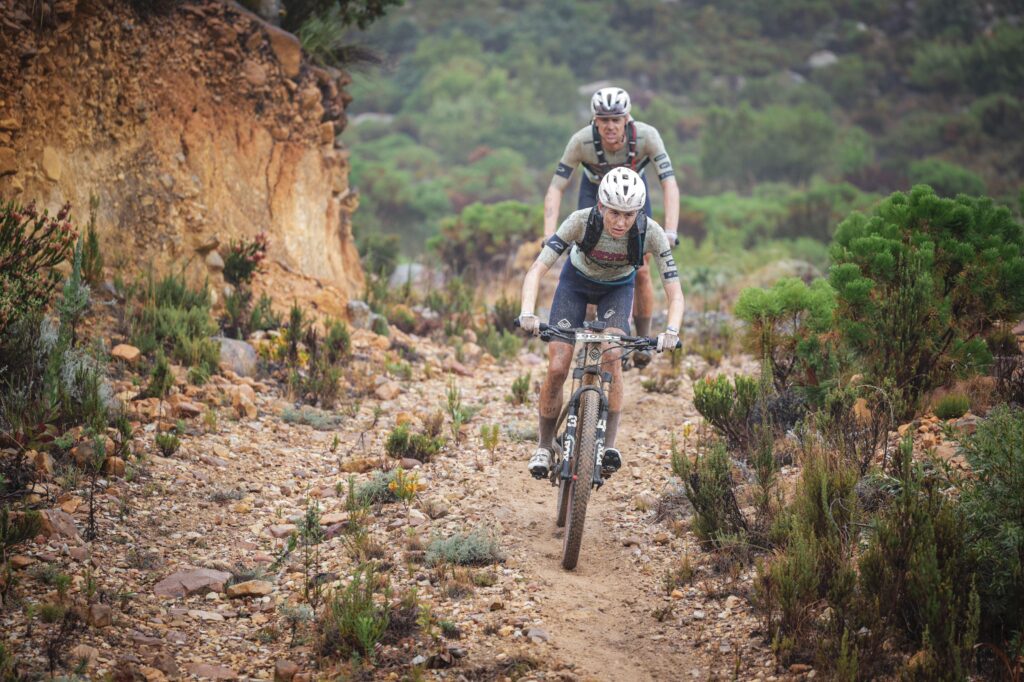
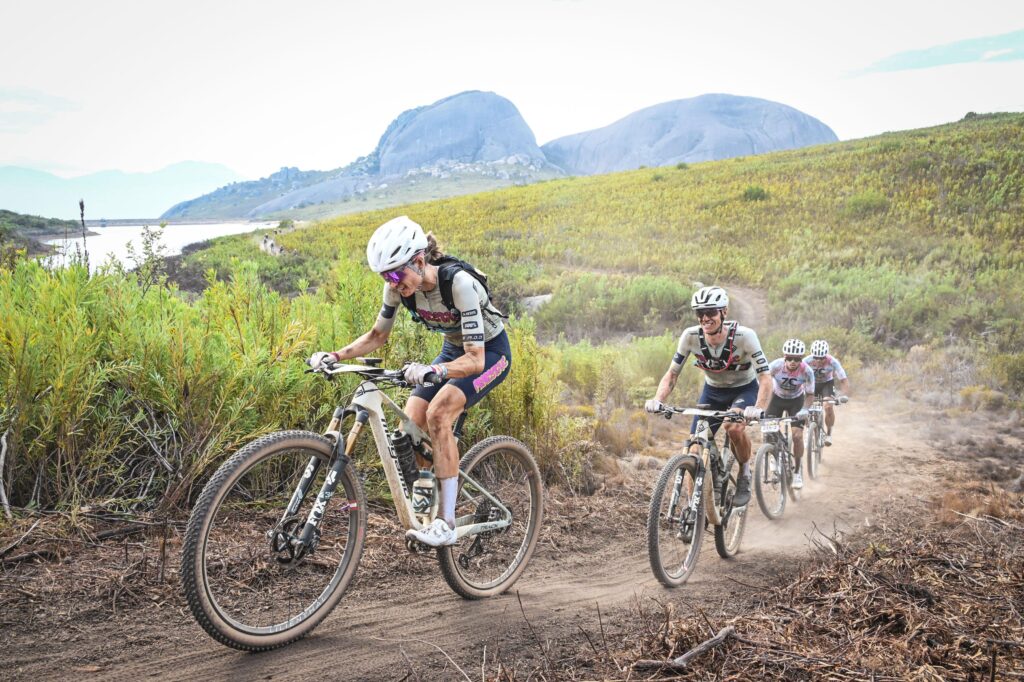
The start of our story: signing up – the biggest threshold to overcome for us.
Tess always wanted to ride the Cape Epic and once we agreed on spending a big part of our “fun-holiday-savings” onto one single race we purchased a lottery ticket for the race entry. Our approach was, if it’s meant to be, we will be selected and get a chance to start. Winning this lottery does not mean free entry: it simply means you get to buy a slot for the sold-out event. We got an email days later with the info that, if we want, it could be on. 30 days deadline to pay the amount. After 25 days of pondering over whether we should do it, we ultimately started the payment process. Further down a table with all the spendings will be added. Stop reading here if you want to do the race and not have 13,5k available.
The preparation for the race. The most stressful part of the journey.
Almost a year before the prologue, the payment was made and the preparation started. And that means asking friends and people who have done it and reading lots of online comments on various discussion forums. At this point you need to decide for yourself: Do we want this to be a race in the sense of “best possible performance” or do we “just want to experience the hardest mountain bike race in the world”.
Our first goal was to make it to the finish line. But of course, knowing us and our legs, we knew we were not going to be at the back of the bunch. So, the second goal was to be on the podium at least one time and the third goal was to be top 5 overall. If that’s your goal, skip the online forum discussions. Most of them give you a good insight into life in the race village = tents. That was not an option for us. Even the “upgrade” tent versions were soaking after the 4th day of rain. Lots of participants prove that you can make it to the final finish line sleeping in the tents included in the entrance fee. But again, if you want to race the race, we will not recommend that. In our opinion, the extra cost for the tent upgrade is not worth it either. You will see in the cost overview that the apartments we booked were not too expensive and very close to the race venues. And believe us when we tell you that, after 5h in the baking oven, sand in and on everything, with people around you all day, you will just love that cold shower alone in your Airbnb. That also means you need a rental car. Some people we met did apartments + Uber. It did not always work out for them because even though you are close to bigger towns, the race venues are still in the countryside.
So far: Entrance fee + apartments + rental car.
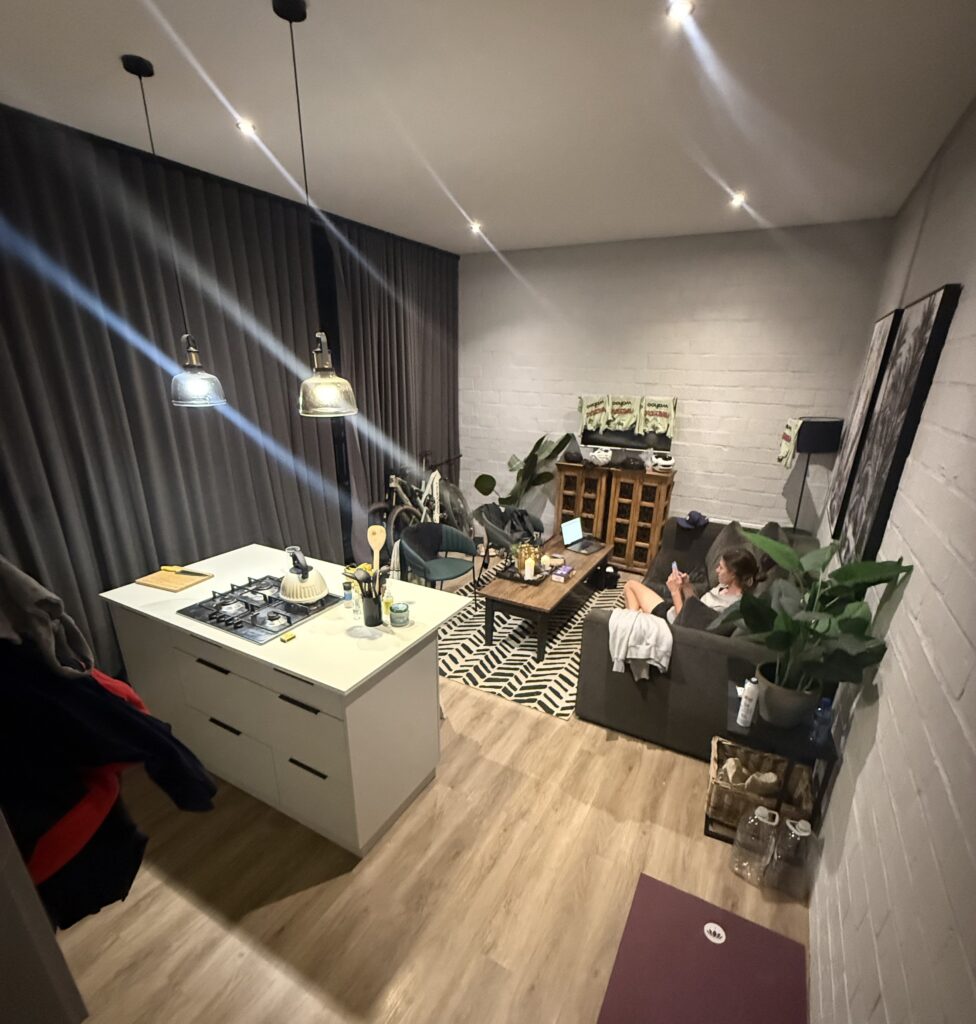
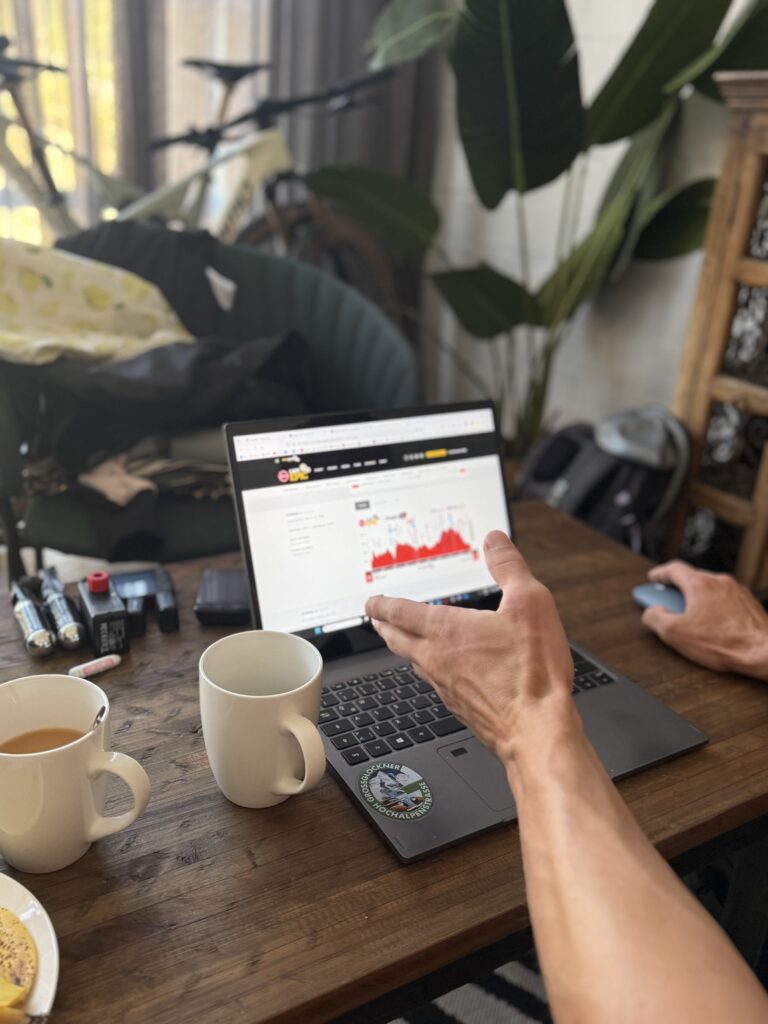
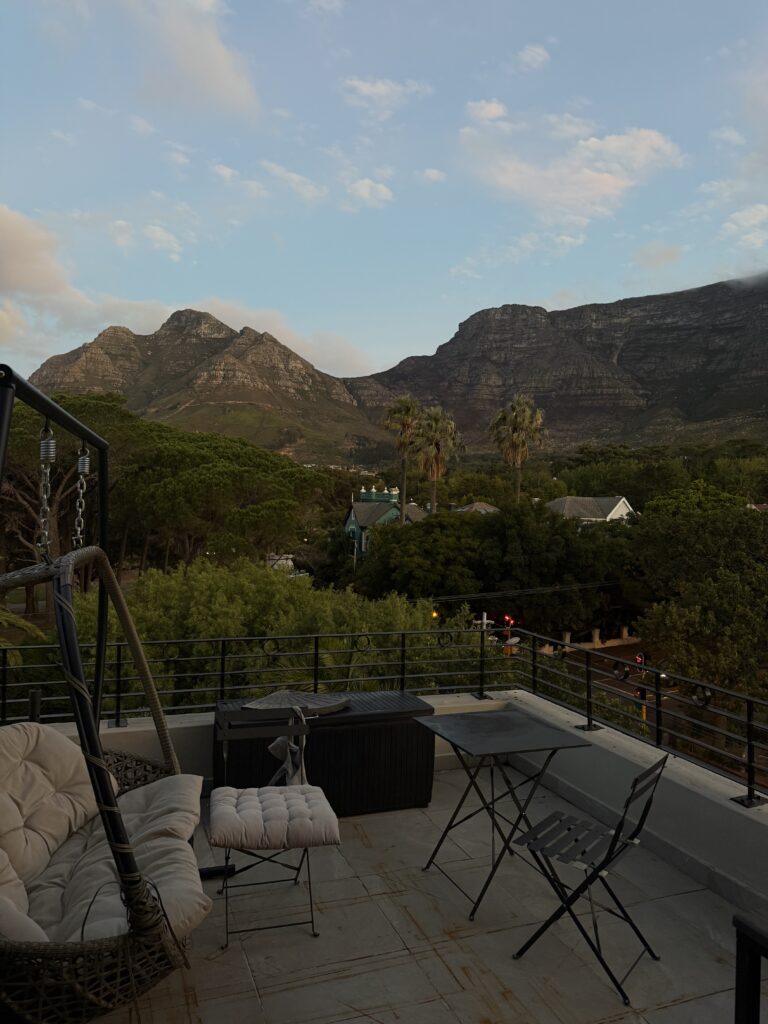
When to go: since we wanted to check the trails before and have some time to settle in, we landed in Cape town on Tuesday before the prologue started on Sunday. Wednesday or Thursday would also work well for a smooth start. We flew via Doha, the cheaper option with Air Qatar. There are direct flights, from Munich e.g. That will save you around 6-8h one way but that’s for you to decide. Renting a car directly from the airport, the cheapest option with Kenings Green motion for a car that could fit 2 bike bags, 2 bags and 2 people. It was a Toyota Rumion, good choice, we would book it again.
Support on site, bike mechanics: First thought, we could take care of our bikes ourselves and there is a bike wash included in the entrance fee package of the Epic. Someone takes your bike after the finish line, washes it and puts it in the guarded bike locker (That was actually safe by the way. Haven’t heard any complaints). We did hand in our bikes after the finish line crossing one time, to see for ourselves and the bikes were somewhat clean. Not as we would have liked them and we reckon you would have had to invest 45-60mins every day per bike to make it work half decently. Thankfully we had booked a “Cape epic mechanic package” with Gear Change Cape Town. Not via the official Epic Website, we directly contacted them because a friend referred to them as very good. The best decision and I would do it again 100%. Every day we handed our dusty or muddy bikes in and the next morning we got a perfect bike to start with. That also saves you the hassle of storing your bike. They check everything for wear and damage, and charge all the batteries. They also would have all the spares. we brought a lot of spares (tires, shifters, rotors, pads, batteries, plugs, tubes, valves, pedals, saddle) since we like to race with the stuff we are used to, but if you don’t have that. No problem – they have got you covered.
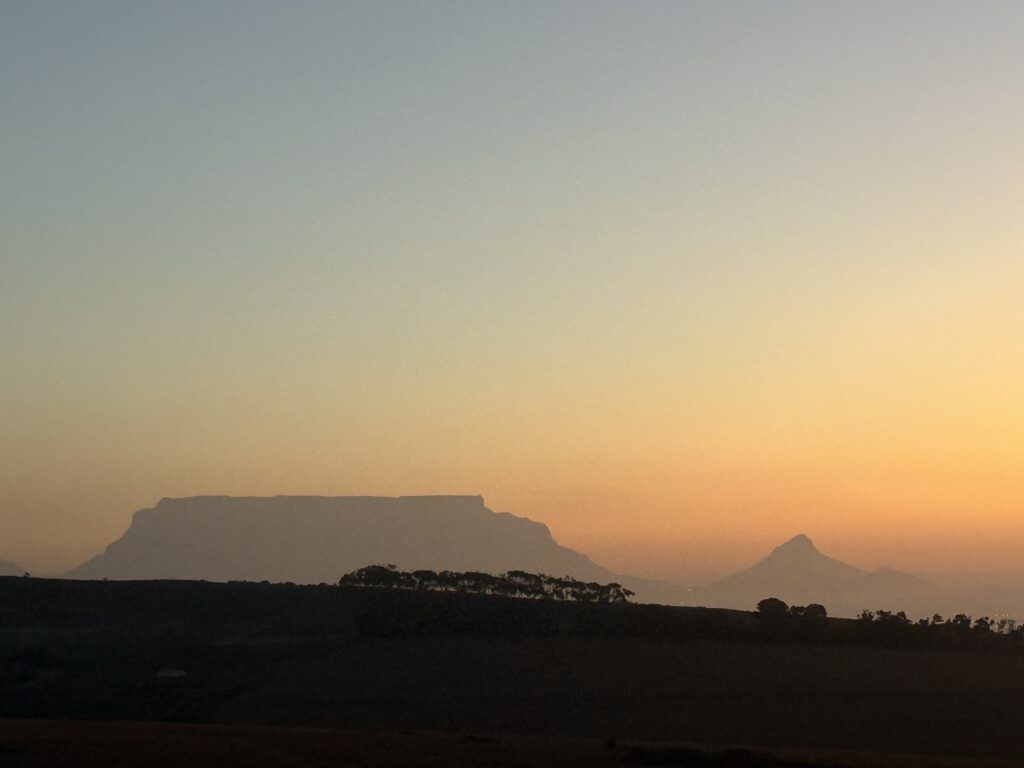
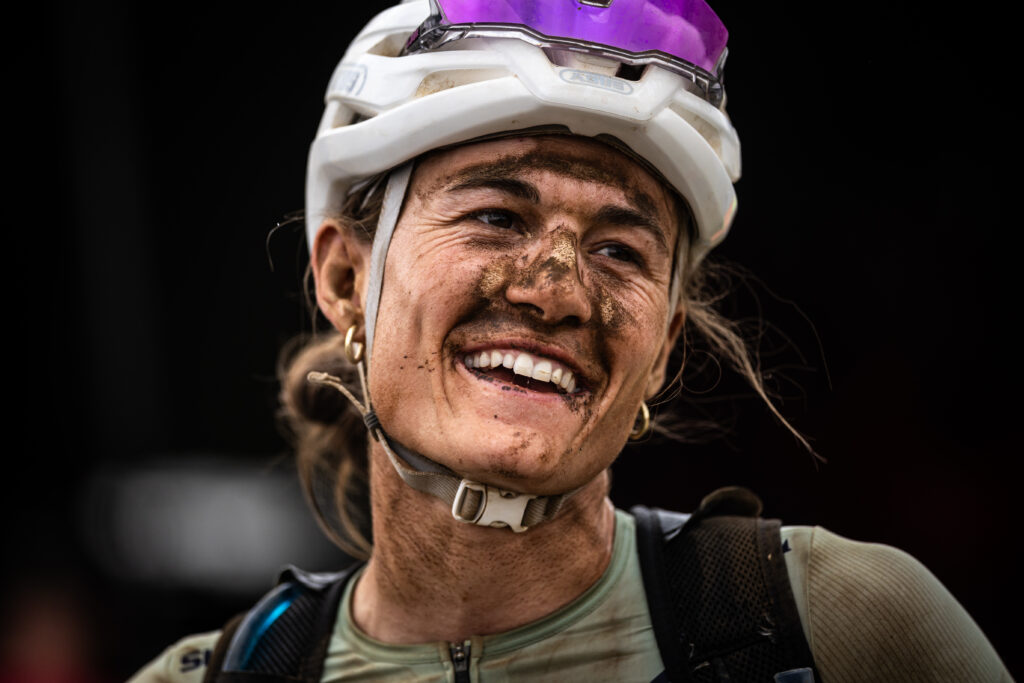
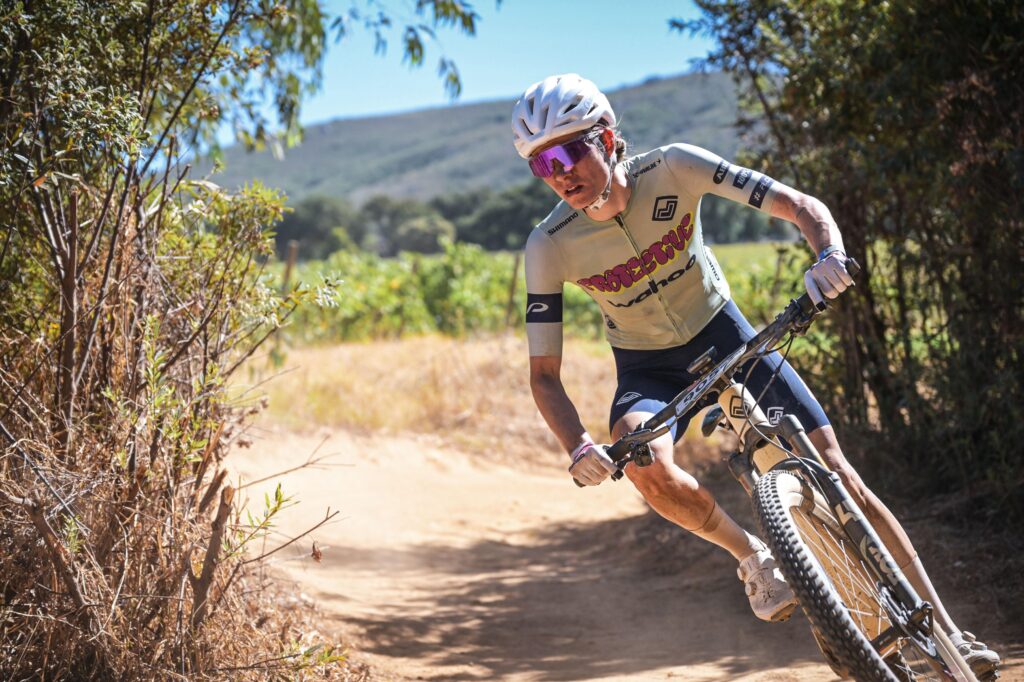
On top of the great mechanics service: the guys have done the epic many times. They gave us a lot of useful tips, always happy to help and in a positive mood. Kept our spirits high through the whole week. They also store your bike bag if you want. Their shop is close to the airport, so we stopped on the way to our first Airbnb at their place. We built up the bikes together, had a chat (they have very good coffee in their shop) and we left our spares and bike bags with them. From there you see them every day after the race and in the morning before the race. Free storage of bike bags with the race organizer until the last day of the event is possible for free with the entrance fee. But keep in mind, when you drop out of the race you cannot pick up your bike bag earlier. Only after the last race day.
Support on site, Massages from the Elite Performance Factory Cape Town: Our birthday presents to each other this year. Again, we did not book it via the official website and saved around 50€ per person. We had a massage therapist for the whole week, around 45-60min every day at your preferred time. Very professional, very friendly. He would always come to our Airbnb. Highly recommended but not as important as a working bike, if you know what I mean. We would book the service with the Elite Performance Factory again.
Support on site, washing: If you stay in the tents and have no car, you have to book the washing service provided by the Epic organizer. It’s around 50€ per person and it works, 1 kit per day per person. We did not book it since we found two apartments with a washing machine and for the days with no washing option, we brought the laundry to a laundry store in a shopping center 4km away from the finish line. 5kg of laundry costs you 7-8€ and takes 45min. While waiting we did our shopping and had coffee and a cake. We could have also gone back home and pick it up the next day. So very easy and there are lots of laundry places not too far from the race venues. We would also do that again, gives you something simple to do. It will also be cheaper than the washing service.
Support on site, media team: we had no one there and looking back, of course it would have been nice to also book someone for that. Especially since we had a very good run. But overall, the Sportograf service is more than enough. Just make sure you book it before the event starts because then you get a photo every day starting with the prologue. We did not do that and had to wait for our first photos until the whole event was over.
So far: Entrance fee + apartments + rental car + mechanics + massage treatment
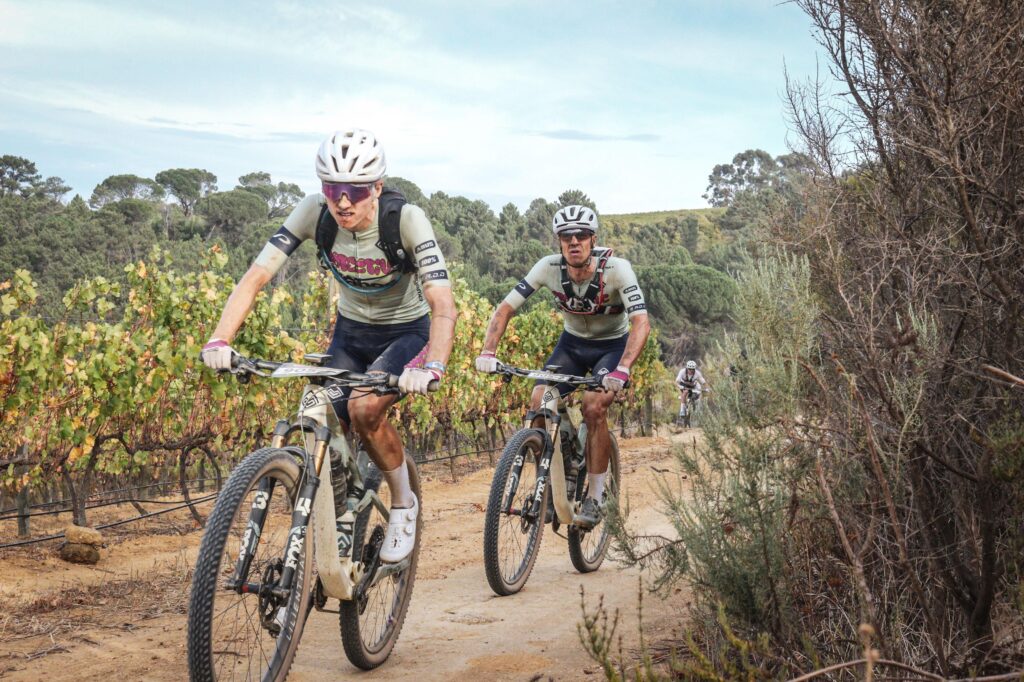
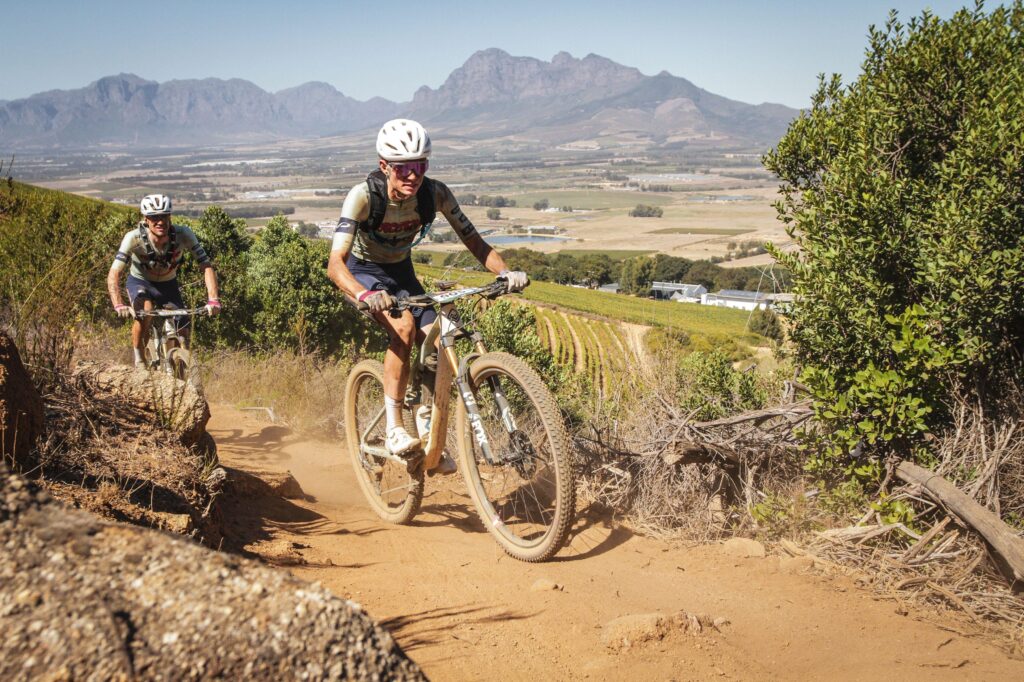
Support off site and pre-race: In my opinion, the most important thing to do. Know the race, know the days, know what you want, know your partner and especially know your pacing. You reach deep into your pockets for that event. Basically 1€ for every meter of elevation you gain (ouch). So be prepared as well as you can because once the ball is rolling, you will be tired, and unnecessary mistakes will not make you less tired. No matter if you fight for the win or to see the finish line. Save as much energy as possible. If it’s your first time or you don’t know how to prepare for a stage race: ask people, read online threads or even ride a test event. Depending on your pockets, Wines to Whales is a good option. We did not ride a test event, but we know a little about racing and we know each other very well. It took 2 days to get in a good rhythm, we saw loads of teams not working together all week.
Pacing/race strategy. As part of the planning process, know your limits, hire a coach. Again, no matter if you fight for a podium or to make the time cut. You need to know how hard you can go for how long – also how long your partner can go. Pushing your partner over the limit in the earlier days will cost you big time at the end of the week. Instead of riding ahead of your partner if you feel better, ride behind him and push him or her over crests or uphill on the jeep tracks where it is possible. Not necessarily a very hard push, just a hand on the back providing 10 extra watts. Or let your partner grab the strap of your hydration pack. We did both, depending on the track. That worked very well, highly recommended. By holding on to the strap both riders can ride “their” pace.
We paced it very well and that was the key to making it to the finish line (fast). We only really raced on the last day. All other stages were paced from the first to the last meter. Looking at the timing points for every stage, we mostly were around 150-180 in the first timing points but in or around the top 100 at the finish line. In the end we finished 84th overall with 44 elite men teams and 5 elite women teams ahead of us. We had no bad day, not a single minute letting go of the pace. We basically rode every climb longer than 100m of elevation gain around 90% of FTP. From top to bottom without letting go of the pace. Keep in mind: we could ride at a certain percentage because we knew from experience / training that we can theoretically climb “forever” at that pace. We did not try anything new during the Epic. Sometimes we would push harder over a crest to overtake before a trail, but nothing out of the ordinary. Especially in flat parts after a climb: don’t let go. Don’t put your legs up. It is better to go at 85% of FTP in the climbs and be able to push 85% also in the flat parts instead of climbing at FTP and then go 60% in the flat stretches.
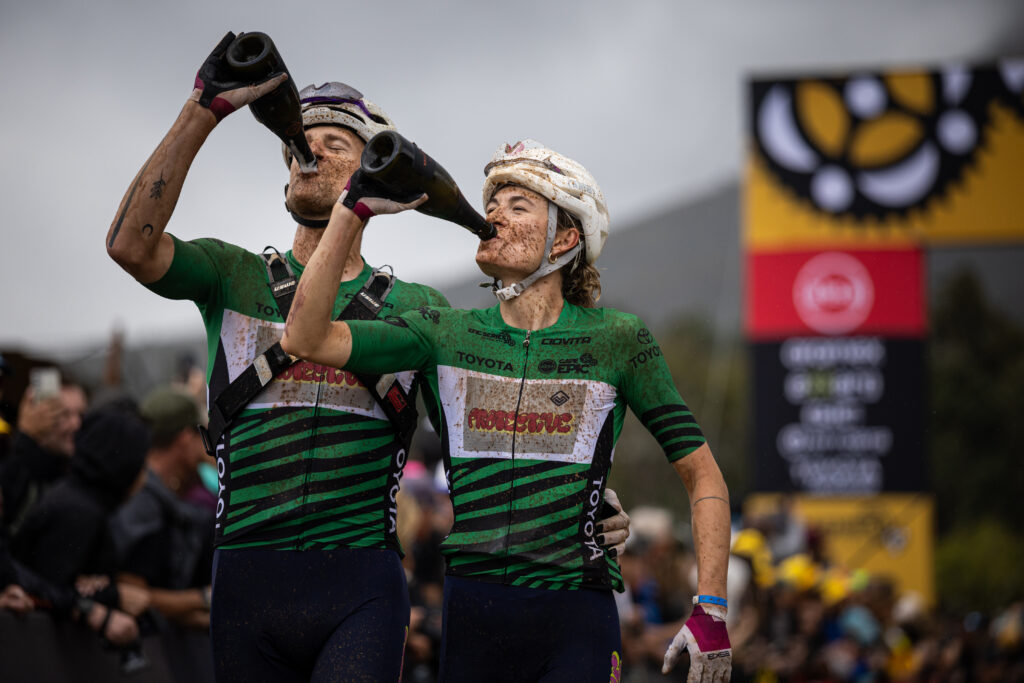
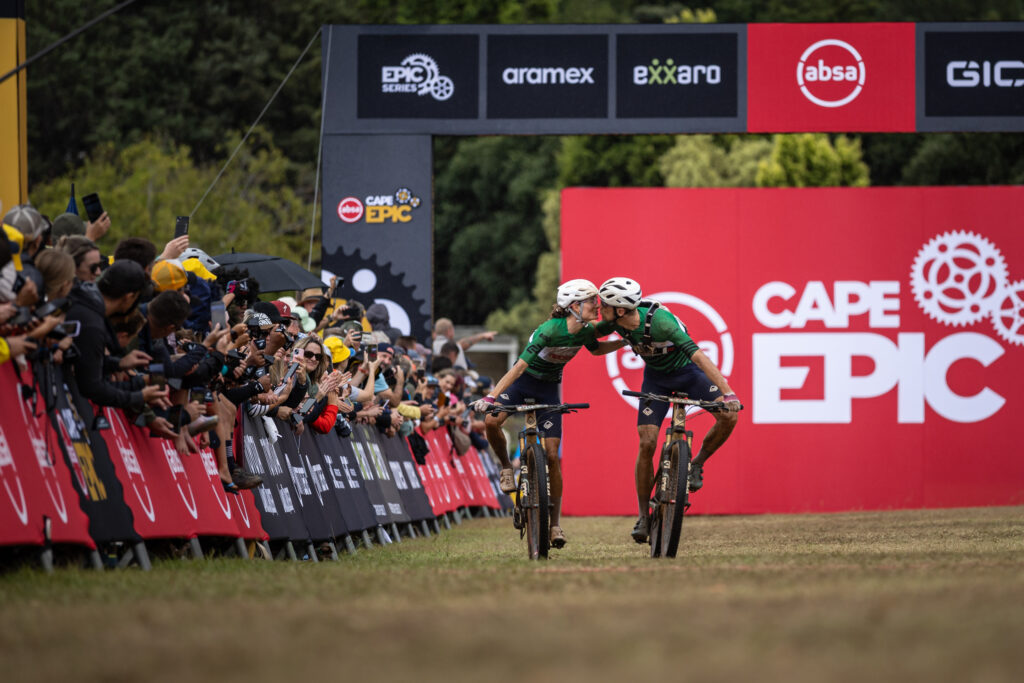
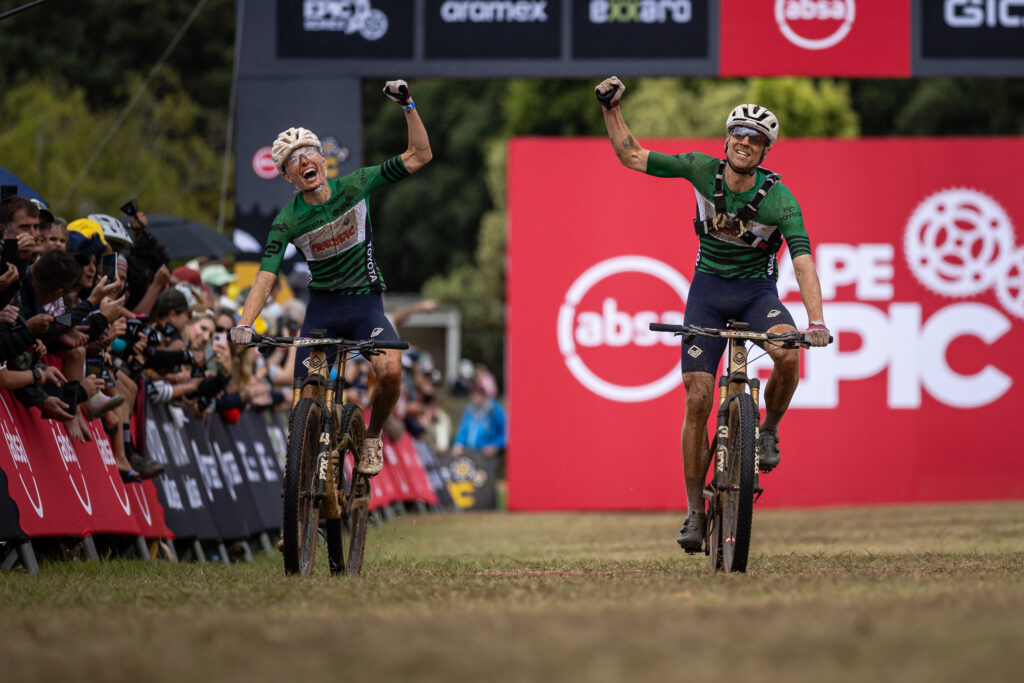
Our goal was to have a very steady ride for the “weaker” rider. The stronger rider has a little bit of less steady pace because of the pushing and pulling. The Cape Epic has nothing to do with a one-day race = don’t pace it like one. You don’t benefit (technically a little bit) from drafting, so let them go. Pace yourself over 30h that’s it. The slower you ride, the more important pacing gets. You will be climbing for many hours, close to 16000m in our case. Plenty of time to make up. You may gain 1 minute on the first flat 10km but lose 10 minutes in the last hour of racing because you spent a lot of energy sprinting out of corners in the beginning. Even though it’s a lot of single tracks, you will always be able to overtake at some point. Don’t stress at the start. Especially men tend to push it in the beginning. We always saw them again on long climbs and they never could follow our pace once we overtook them. All Phils power data is on Strava.
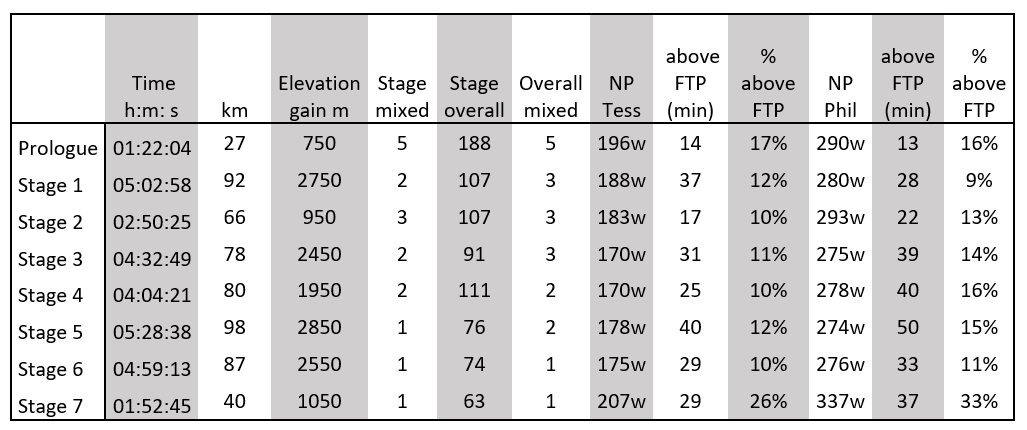
We gained the most time on the last stage, even though it was by far the shortest of all the stages we won.
Warm-up and race nutrition: We never warmed up except for the prologue (10 minutes) and the last stage because we knew we would hammer it from the beginning (10mins). For all the other stages we just rolled up to the start and took it easy, didn’t sprint out of corners or pushed too hard over crests in the beginning. All the carbs we ate throughout the race were products we brought from home. Even though gels and bars were provided at the official feed stations, we preferred to stick to the products our guts are familiar with. We raced with hydration packs except for the prologue and the last stage (Tess). Tess also never stopped at a water point. I would go ahead and fill up empty bottles or stop, fill up and catch up again with her. That worked very well. As mentioned earlier and as you can see for yourself looking at the relatively small % spent above FTP: don’t race it like a one-day race and don’t eat like in a one-day race. Every stage (except for the prologue and last stage) we consumed 2-4 bars each. Not only gels. We used 34 bars, 72 gels and a little less than 3kg of carb drink mix during the 8 days of racing. On average we had 75-85g of carbs per hour of racing. At the pace we rode more would not have made sense and we did not train our guts for it. We focused on continuous carb intake, setting a reminder on our Wahoo and asking each other what we had eaten in the last hour.
Food and post-stage schedule: breakfast was mostly toast with peanut butter and jam around 90-120 minutes pre-start. Rice only for 2 mornings. After coming to the finish (either hand in your bike for the wash by the organizers or store the dirty bike in the bike vault area) you get to the post-race chill area where they serve food. Lots of different stuff. Desserts also 😊 We always ate a main course and dessert. We also had our own recovery shakes with us. You can drop a bag at the start, and it will wait in the post-race chill zone. We never had spare clothes or anything in that bag, just the recovery shakes because it was not cold and the car was not far away. The car key was stored with our mechanics. They also did the transfer of the car. After the post-race meal (you can also put it in a doggie bag and eat it at home) we collected our bikes, brought them to our mechanics (in the tech support area of the race village), collected the car key and had a chat. They asked about the bike and if you noticed anything that needs fixing etc. When it was warm and nice to hang around, we would stay with them a little, have something to drink and come down a little from the hectic race. During the rainy stages we went straight home.
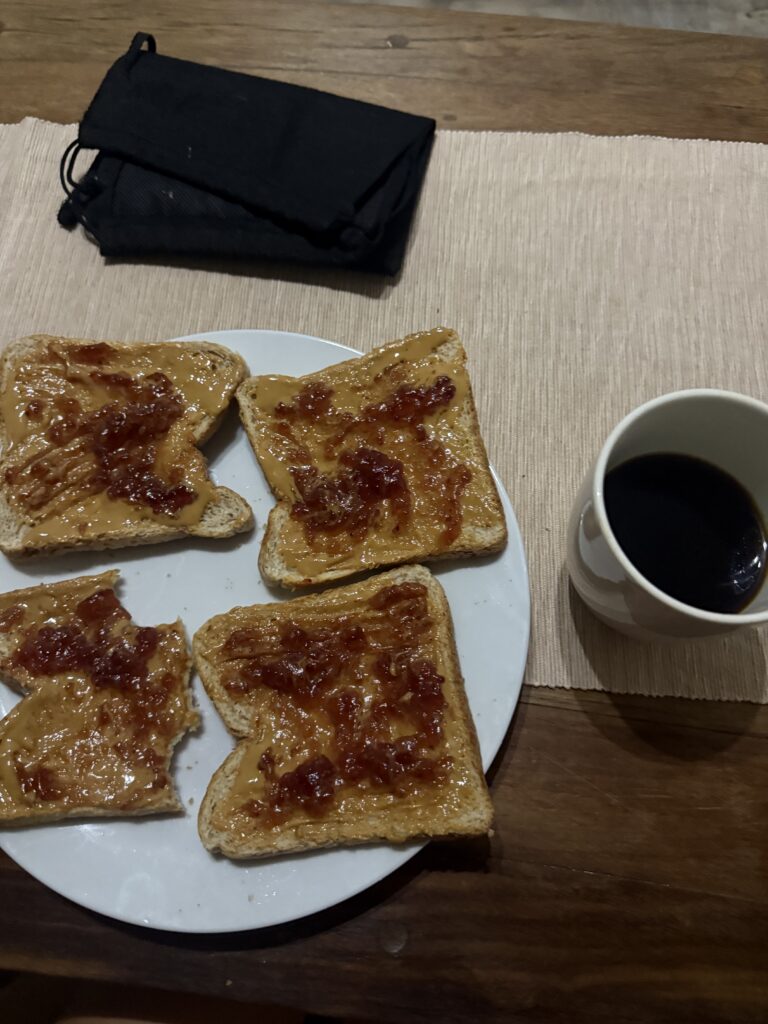
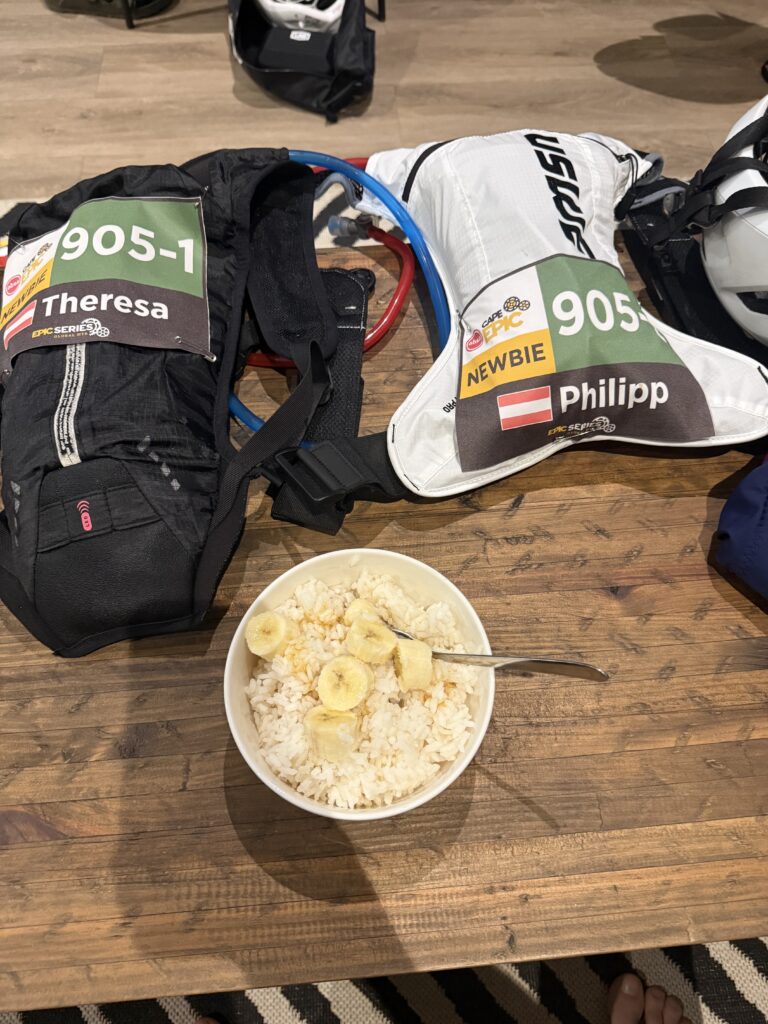
At home we showered, turned on the washing machine, ate some more and tried to have a nap or just chill. I wanted to do some work, but I didn’t get much done. Even though I was not physically on the limit, my head was very tired. I was glad not to focus on fixing a bike or something. We would have an afternoon snack or leftovers of the post-race meal. We cleaned the bottles and prepared them for the next day with nothing to do after dinner. Also packing nutrition and clothes before dinner is nice because you have nothing to worry about in the evening. For dinner we always drove back to the race venue and had dinner included in the entrance fee of the race. We were not particularly careful but used hand sanitizer and didn’t sit too close to someone. The food in the race village was much better than we thought. Rice, pasta, potatoes, a variety of meat and salads. We only ate food that was boiled/cooked. Never any cold/raw salads or cold cuts. We did not drink tap water but drank the water in the race village (and feed stations) from the filtered taps. We had no stomach problems throughout the race. We did not spend much time in the race village, dinner, podium ceremony and back home. Before bed we double check our clothes, race nutrition and course profile.
Clothing: you don’t need to bring much. We brought way too much. I was not wearing underwear until the Afterparty on Sunday. Bib shorts or swimshorts. Even when it was raining, it was still 20 degrees. Washing is (almost) always possible, so pack light. No matter if you go for the tent or Airbnb. With Protective Sports we had a very good looking kit that gave us no problems during the race. No sore places, no itching or scratching anywhere. Of course that is an important factor considering the consecutive race days. You don’t want tears everytime you sit down on your saddle. We saw some riders without gloves, don’t know how they did it. We were very happy about our Eska gloves. We rode the ACE model every day.
Bikes and spares: don’t go for lightweight, go for “works up and down”. Thanks to our bike partner Megamo we had superb equipment. We rode the Track 00 with Axs shifting plus powermeter and Shimano XT 2 piston brakes. In the beautiful forest colorway. We rode on Lilienthal epic XC wheels with a 30mm internal width and Schwalbe Racing Ralph – Racing Ray in 2,35. We both rode an insert in the rear wheel. Lots of pros ran on wheels with Thunderburts and the equivalent from other brands. Definitely do-able in dry conditions. Since we couldn’t bring lots of tires, we stuck to a “safe bet” and it paid off. As soon as the rain came the tracks got muddy and parts were very slippery. No chance for us both up and down with a semi slick tread pattern. Go for the safe bet, it’s a long race, with lots of different weather and track surfaces. In terms of spares for the race we had 2 plugs ready to use in each handlebar (Samurai sword) plus 15 spare plugs in my hydration backpack. Spare axs battery, electric mini pump, tube, tire lever, tape, zipp ties and chain lock also in my hydration backpack. On my bike 2 big CO2 with heads already on. In my jersey pockets one big multitool with a chain breaker.
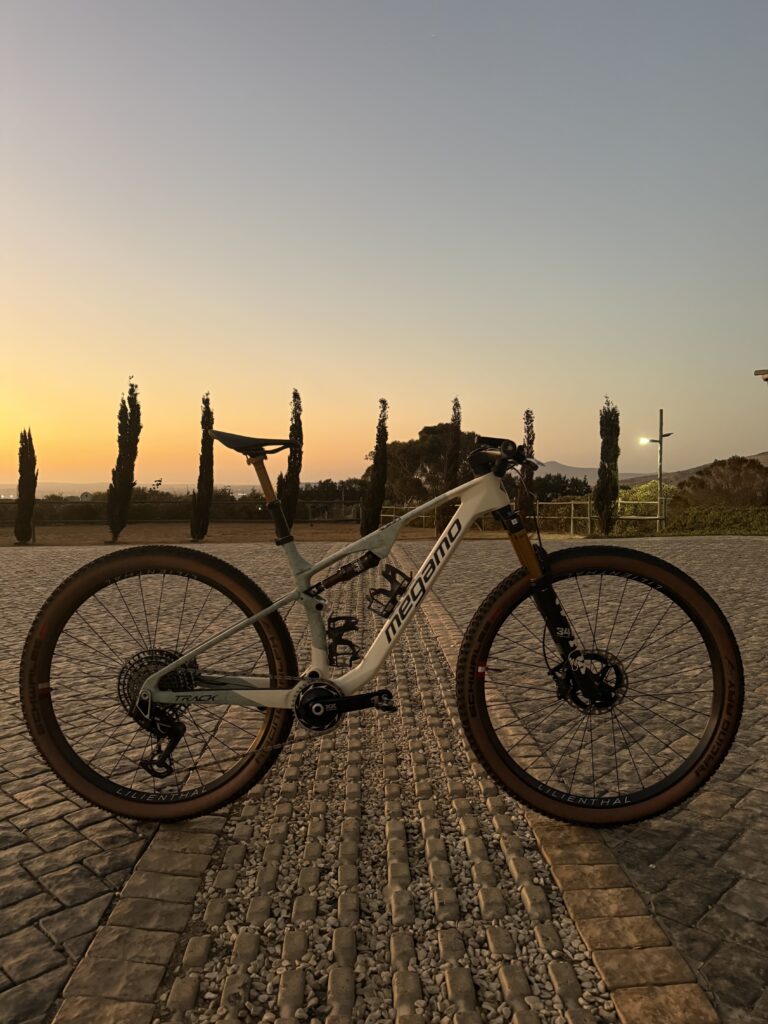
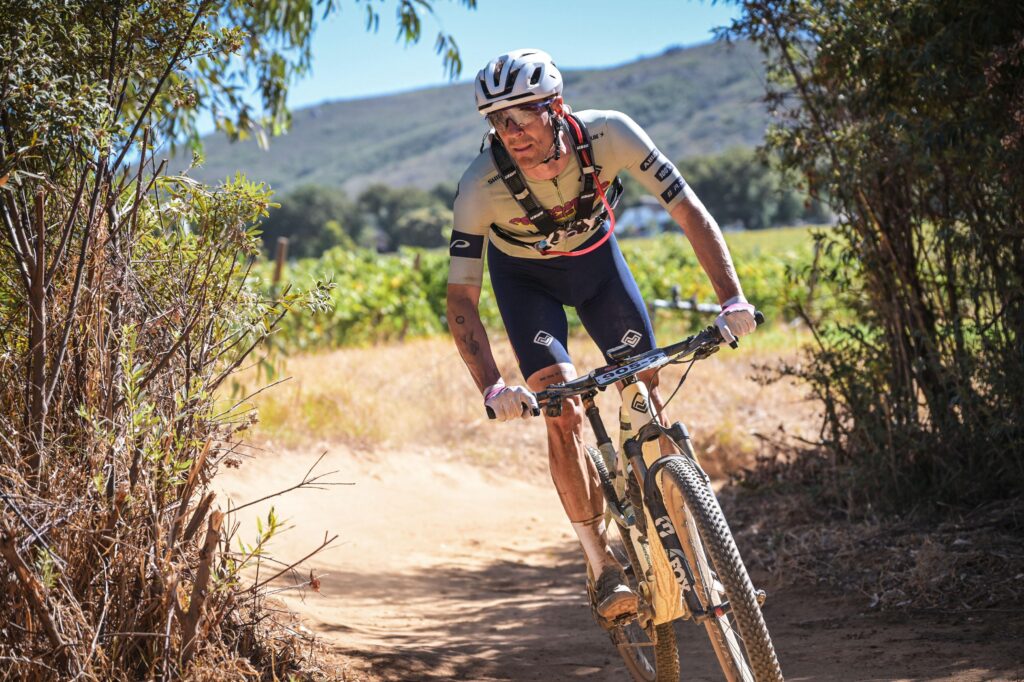
Even though we were well prepared we still had to overcome some problems (Tess had a running nose before the prologue, a filling came loose in one of my teeth). Problems you can always have in a race week, so don’t come unprepared. The load of problems will just get too big at some point. We would book all the same services again, basically would not change much. Except to go two days later to South Africa. We rode a bit too much prior to the event because the trails and weather were so nice. Arriving Thursday/Friday early before the prologue is enough. You can’t adapt to the heat with just 2 more days down there (we did lots of heat training at home) and you can’t check the course. Just ride the prologue the day before the start. We flew back home on Wednesday after the race. Looking back, we would go back a day earlier. You are a zombie the days after the Epic. So just hanging around is not gonna help you. Either go for a flight on Monday afternoon or Tuesday morning. Don’t go Monday morning because there’s a party on Sunday. Going a little later and leaving one day earlier would have saved us a little money. Not much, but we didn’t do much in those days.
The last 2 weeks before the prologue were the most intense. We were nervous about missing something or getting sick etc. Once we got off the ramp it was all gone, we could really enjoy the race. The surprising fight for the win added a nice layer of excitement and grit to it. 10/10 for the experience, we can only recommend it. Doing it again: at this point no. Ask again next week.
Once again: Thanks to all the brands and most importantly the people behind the brands who supported us. It is a team race, and the team is bigger than just 2 riders. Thanks to everyone we asked about the race before the start. Your advice was part of this success. And last but not least, thanks to all the mixed teams for showing up and the challenge during the race and fun afterwards.

